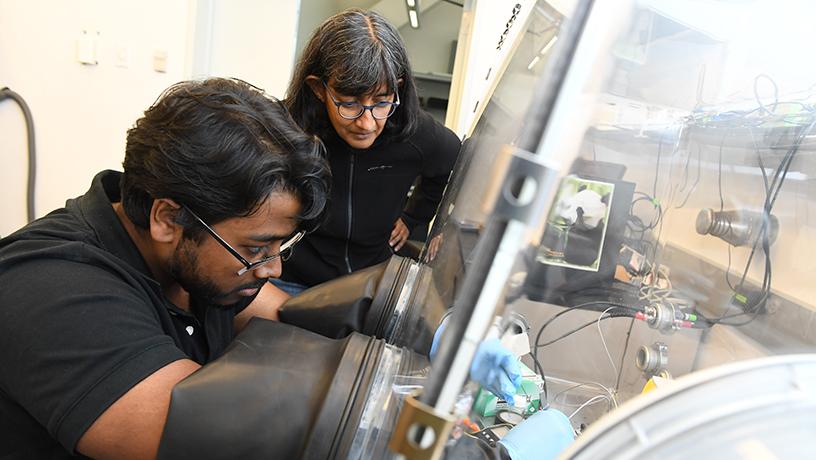Meet the 2023 SURE Fellows
SURE aims to increase diversity in science and engineering by providing research experiences for under-represented students. Explore the 2023 cohort's research.
The Columbia University and Amazon SURE Program
The Columbia University and Amazon Summer Undergraduate Research Experience (SURE) Program was established in an effort to increase diversity in the science and engineering fields by providing a unique summer research experience for a cohort of students from historically underrepresented and minority backgrounds. The SURE Program welcomed its third cohort in the Summer of 2023. Fellows participated in 10 weeks of summer research and professional development, culminating in an end-of-summer research symposium.
On This Page
- Ainslie Allen
- Ajayvir Singh Sohal
- Alex Kwon Green
- Angel Romero
- Anjeli Santillan
- Ayman Rddad
- Chidi Onyekwelu
- Chondi Touray
- Daniel Weiner
- Daniela Ayala
- Doyup Kwon
- Elizabeth Dentzer
- Eryn Dennis
- Henry Fuchs
- Irsath Azeez
- Janissa Abreu
- Jonathan Martin
- Julian Kim
- Katherine Alcazar
- Keicha' Barnes
- Kelly Yen
- Keylin Boyd
- Krithika Subramanian
- Lana Lukacevic
- Makayla Mitchell
- Marylyn Carrillo
- Megan Trapanese
- Mia Minaya
- Michelle Wyss
- Mohamed Albasuony
- Natalie S. Peralta
- Pierce Rubenstein
- Sean Wu
- Shivi Jindal
- Sofia Cruz
- Steven Robles Blasini
- Tara H Kimiavi
- Weiyi Zhang
- Xin Yi Therese Xu
- Yuliana Garcia
- Zahidul Zahin
Ainslie Allen | Roar Lab
- Mentor: Professor Sunil Agrawal, Mechanical Engineering
- Home Institution: University of Maine
- Hometown: Old Orchard Beach, ME
Analyzing the Effect of Affect on Gait
Falls pose a significant threat to aging individuals, requiring effective interventions. Strategies like medical alert systems, lifestyle changes, and balance training programs have been developed to mitigate fall-related injuries1, however, these strategies neglect to consider the contribution of emotional state to fall risk. This is important because age-related cognitive decline impairs a person’s ability to process external stimuli2 and emotions induce a cognitive load on the brain3. Therefore, processing emotions can increase an older person’s fall risk. There has been some research into the effect of emotions on posture and balance4, however, they mainly focused on discrete emotions like fear, anger, or contentment, making consistent emotional experiences across subjects difficult. Instead, by studying the emotional state of a person using a dimensional model of emotions5, an element of objectivity can be added, accounting for this error.
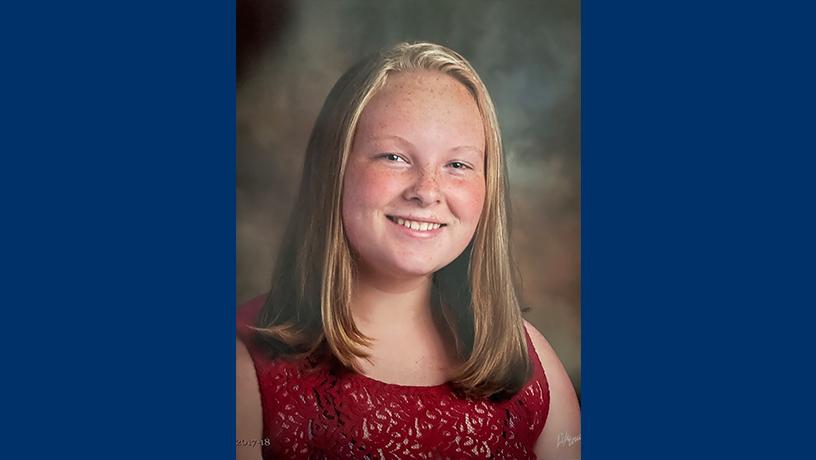
Ainslie Allen
Ajayvir Singh Sohal | Hess Lab
- Mentor: Dr. Henry Hess and Juan Rodriguez
- Home Institution: New Jersey Institute of Technology
- Hometown: Ocean Township
Investigating Fatigue as a Limiting Factor in Electric Servo Motors for Lightweight Robotic Applications
Motors of all size scales, from molecular motors to jet engines, have been found to scale in torque production proportional to their mass with a maximum force density of 57 N/kg.1,2 Despite the differences in force production mechanisms, all motors seem to share the same fundamental limitation, with the current proposed theory suggesting that fatigue is the main factor limiting force production.3 Our project aims to test this theory by observing the fatigue of electric servo motors over a range of stress and identifying the components limited by fatigue. Understanding these limitations could lead to the development of lighter and stronger motors for lightweight robots and exoskeletons that amplify human capability.
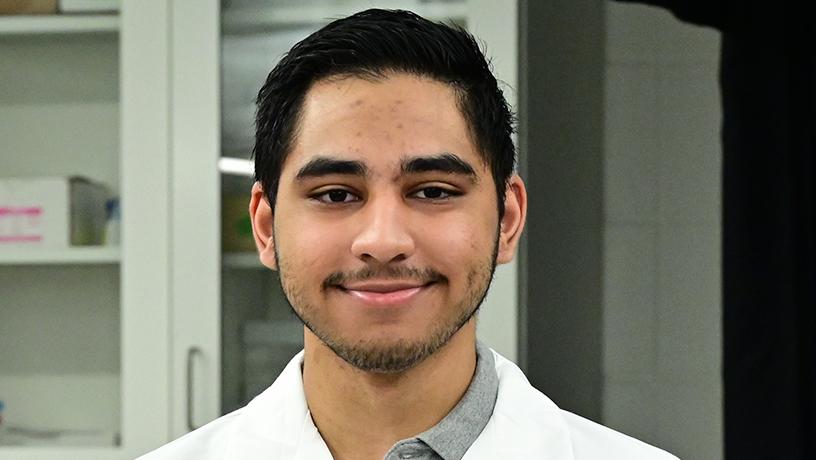
Ajayvir Singh Sohal
Alex Kwon Green | CLUE Lab
- Mentor: Professor Ioannis Kymissis, Electrical Engineering
- Home Institution: Brown University
- Hometown: Kent, OH
Fabrication of CuPc/C60 Heterojunction Mediated Broadband Photodetector Using Physical Vapor Deposition
Commercial photodetector technologies are dominated by the use of inorganic semiconductors. However, organic semiconductors offer several advantages over inorganic semiconductors, including greater flexibility, transparency, spectral response tunability, and low-cost manufacturing. Among many organic materials, a heterojunction based on copper phthalocyanine (CuPc)/fullerene (C60) was chosen for investigation. ITO/CuPc/C60/Al photodetector devices were fabricated through physical vapor deposition. Two versions of devices were fabricated. Device 1 had CuPc and C60 thicknesses of 80 nm and 100 nm, respectively. Device 2 had equal thicknesses of 120 nm. Both devices had Al as the top electrode of thicknesses 100 nm.
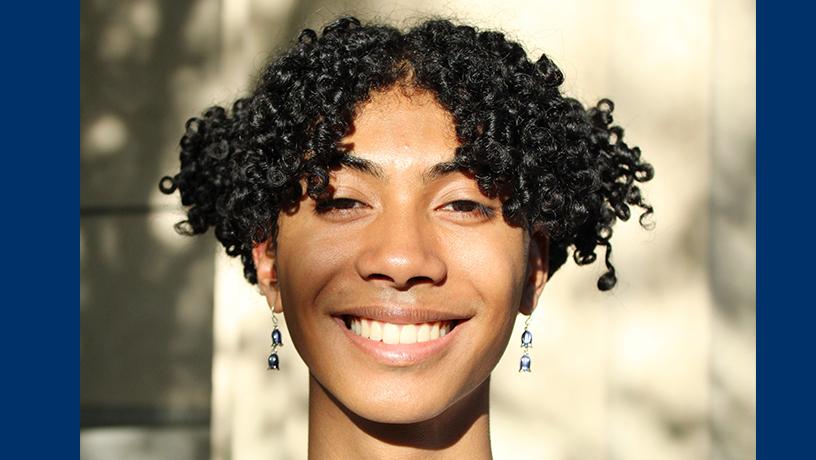
Alex Kwon Green
Angel Romero | ICSL
- Mentor: Prof Xiaofan (Fred) Jiang, Electrical Engineering
- Home Institution: Brown University
- Hometown: Brooklyn
Creating a Biosignal Acquisition Platform for Medical Research
Measuring biomedical signals of a patient can allow researchers to analyze brain, heart, and muscle signals. Previous work has allowed our lab to utilize the Cyton Board, an open-sourced circuit board, to sample these signals. The goal of this project is to improve the form factor of the printed circuit board (PCB) for our purposes, aiming to make it smaller and lighter while maintaining the essential functions of the original board, the most important ones being the conversion of analog signals to digital ones and sending the digital signals over Bluetooth to another device for processing.
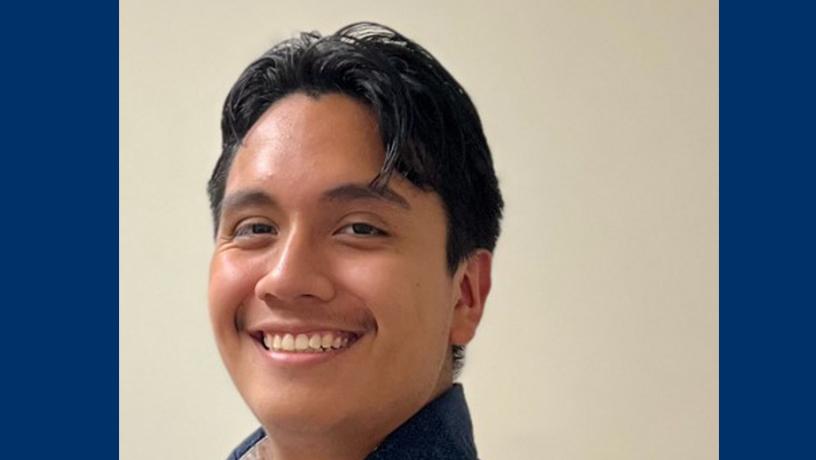
Angel Romero
Anjeli Santillan
- Mentor: Helen Lu and Michael (Ming Chau) Chan, Biomaterials and Interface Tissue Engineering Laboratory
- Home Institution: New Jersey Institute of Technology
- Hometown: Neptune, NJ
Effectiveness of Escherichia coli Nissle in preventing cariogenic environments caused by Streptococcus mutans
Dental caries are a disease characterized by deteriorated enamel. Streptococcus mutans are highly cariogenic oral bacteria that catabolize multiple carbohydrates to secrete acids and polysaccharides that promote bacteria adsorption to the tooth (i.e. biofilm). Escherichia coli Nissle (EcN) and its engineered variants are evaluated in their ability to survive against S. mutans and inhibit its acid and biofilm production, as eventually they will be delivered to white spot lesions to facilitate remineralization and disinfection.
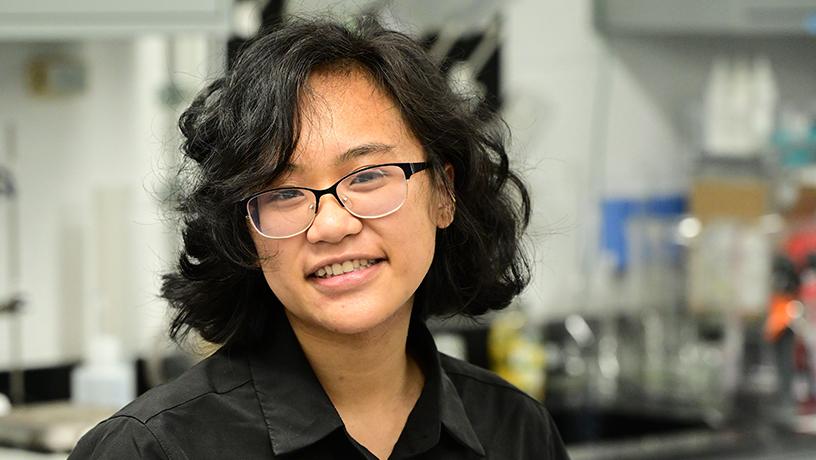
Anjeli Santillan
Ayman Rddad | Sia Lab
- Mentor: Sam Sia and Kelia Human, Biomedical Engineering
- Home Institution: The City College of New York
- Hometown: Staten Island, NY
Mutation Testing in Colorectal Cancer: Leveraging Blocker Displacement Amplification for Enhanced Treatment Selection
Colorectal cancer ranks as the third most common diagnosed cancer and is the third leading cause of cancer-related deaths in the United States. Traditional core tumor biopsies have limitations, such as not accounting for tumor heterogeneity and being difficult to perform. Liquid biopsy offers a minimally invasive alternative, capturing information despite tumor heterogeneity and allowing for repeated monitoring. In this study, we utilized blocker displacement amplification (BDA) PCR to selectively amplify specific mutations, such as T790, with high sensitivity, thereby guiding the selection of EGFR-targeted therapies in colorectal cancer. Although our initial focus was on the T790 mutation in the EGFR gene due to its association with non-small cell lung cancer, we have since shifted our attention to colorectal cancer. BDA PCR allows for the amplification of single nucleotide polymorphisms (SNPs) from the wildtype, facilitating the detection of low variant allele frequencies (VAFs) in liquid biopsies. By identifying resistance to treatment options in a timely manner, this test aims to improve treatment selection and patient outcomes. My research primarily involved assay development and optimization of its sensitivity and specificity.
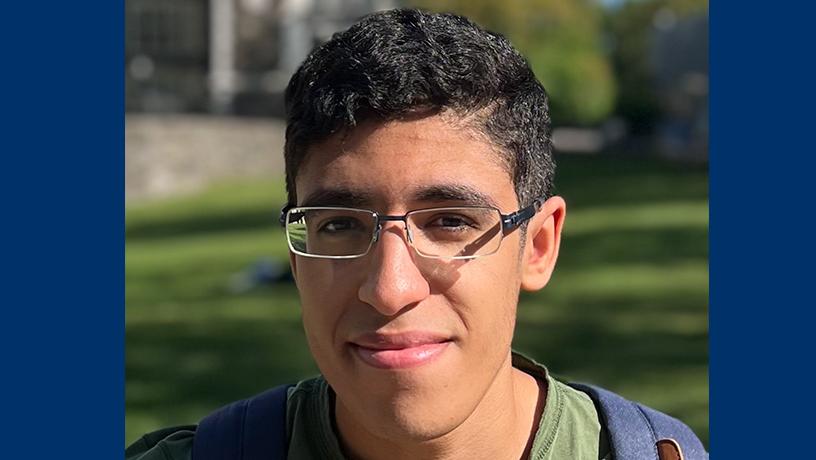
Ayman Rddad
Chidi Onyekwelu
- Mentor: Professor Ioannis Kymissis and Vikrant Kumar, Electrical Engineering
- Home Institution: Howard University
- Hometown: DC
ABSTRACT FOR CHIDI ONYEKWELU
PCBs, which stand for Printed Circuit Boards, have emerged as critical components in modern electronic devices, enabling the interconnection and functioning of complex electronic circuits. They have played a pivotal role in shaping the electronic industry, and their continuous development has facilitated the miniaturization, efficiency, and reliability of electronic devices. I will assist my Ph.D. mentor and analyze different PCBs to be constructed on a miniature camera.
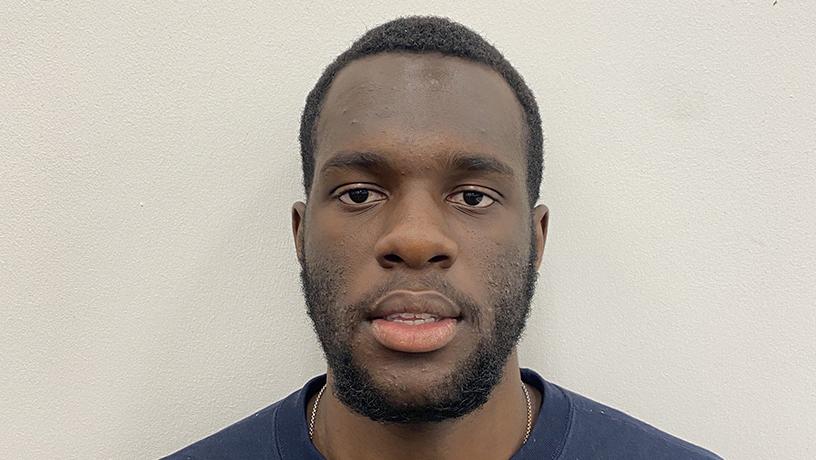
Chidi Onyekwelu
Chondi Touray | DNA Lab
- Mentor: Prof Dan Rubenstein, Computer Science
- Home Institution: Lehman College
- Hometown: Bronx, NYC
Investigating Crosstalk Errors in Quantum Circuits: A Qiskit Framework Study
Using IBM Quantum Lab, investigate crosstalk errors in a 5-qubit quantum computer (IBM Lagos). The objective of this experiment is to reproduce it and investigate the impact of crosstalk error rates with one error type on quantum circuit outcomes. The goal is to emphasize the significance of crosstalk reduction methods in quantum computing systems.
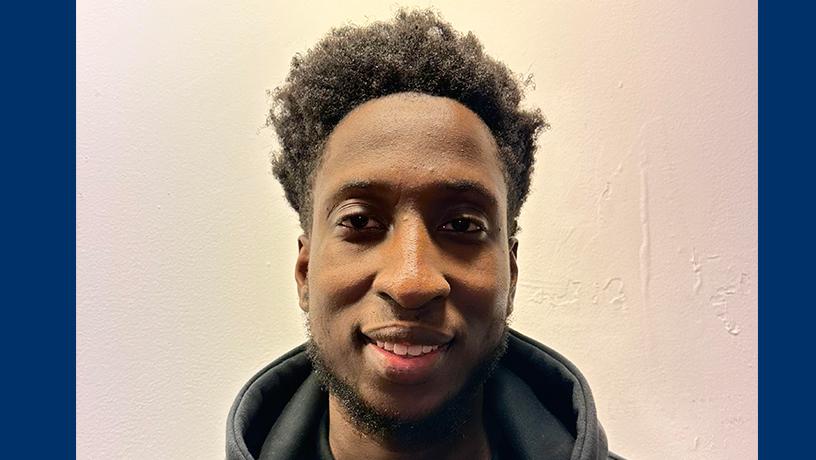
Chondi Touray
Daniel Weiner | CEAL Lab
- Mentor: Prof Brian Smith, Computer Science
- Home Institution: Lehman College
- Hometown: White Plains, NY
Leveraging Street Cameras to Support Outdoor Naviga5on for Blind Pedestrians
Blind and low-vision (BLV) people use GPS-based systems for outdoor navigation assistance, which provide turn-by-turn instruc;ons to get from one place to another. However, such systems do not provide users with real-time, precise informa;on about their loca;on and surroundings which is crucial for safe navigation. In this work, we inves;gate whether street cameras can be used to address aspects of navigation that BLV people s;ll find challenging with exis;ng GPS-based assis;ve technologies. We conducted forma;ve interviews with six BLV participants to identify specific challenges they face in outdoor navigation. We discovered three main challenges: anticipating environment layouts, avoiding obstacles while following directions, and crossing noisy street intersections. To address these challenges, we are currently developing a street camera-based navigation system that provides real- ;me auditory feedback to help BLV users avoid obstacles, know exactly when to cross the street, and understand the overall layout of the environment.
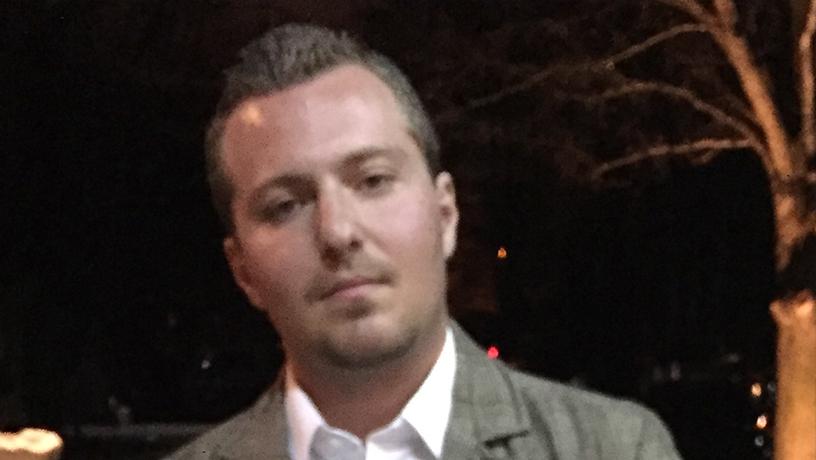
Daniel Weiner
Daniela Ayala | Boyce Lab
- Mentor: Dr. Chris Boyce, Chemical Engineering
- Home Institution: Berea College
- Hometown: Plainfield, NJ
Processing MRI Images of Bubbles Injected into Liquid Suspensions
Understanding the dynamics of bubble formation and movement is crucial in both industrial and natural settings. In natural processes, such as volcanoes, bubbles rise, split, and coalesce in magma. These bubble dynamics also have significant effects on interphase heat and mass transport, as well as the mixing of liquid and suspended particles. Jets of bubbles injected through a single nozzle into a liquid are common in various industrial processes. The research focuses on MRI imaging of bubbles in high-viscosity silicone oil with varying sesame see percentages (0%, 10%, and 20%) to detect "regular coalescence." However, to detect the bubble patterns, the displayed images require processing and enhancement for better clarity.
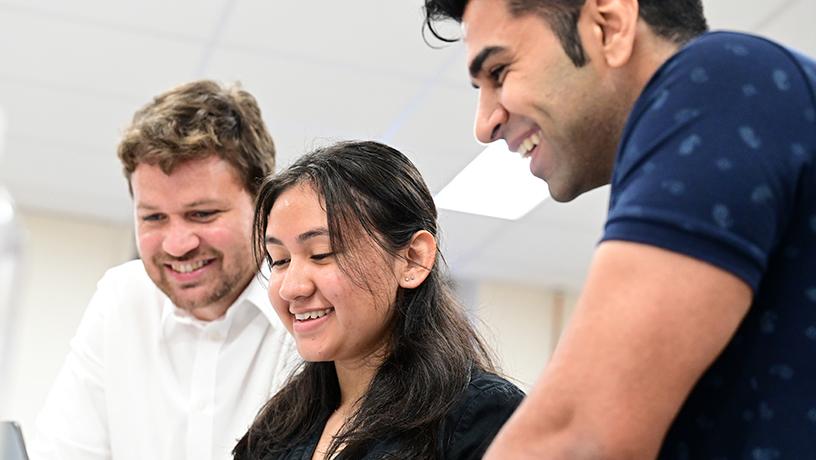
Daniela Ayala
Doyup Kwon | Environmental Flow Physics Lab
- Mentor: Prof Marco Giometto, Civil Engineering and Engineering Mechanics
- Home Institution: University of Notre Dame
- Hometown: Torrance, CA
2D to 3D Wind Speed Data Reconstruction for Development of Low-Cost Monitoring Systems
To generate reliable simulations of boundary layer flows on the regional scale, largescale monitoring systems collecting spatiotemporal in-situ measurements are essential. Using 2D anemometers instead of 3D sensors significantly reduces costs and allows a denser monitoring network with additional stations. To make this substitution possible, it is necessary to reconstruct the vertical component of the wind velocity, w, from the measured horizontal velocity vector (u, v). The present study aimed to develop a machine-learningbased reconstruction of vertical wind velocity w to facilitate the reliability of 2D anemometers in the field.
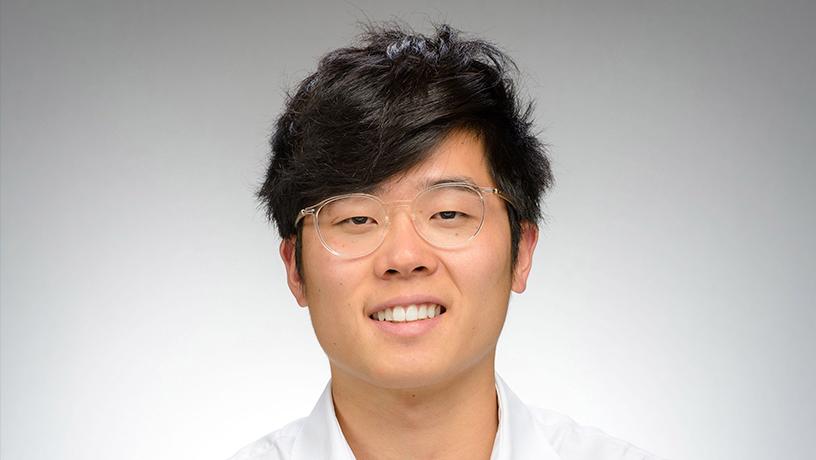
Doyup Kwon
Elizabeth Dentzer | Xu Lab
- Mentor: Bolun Xu and Zhiyuan Fan, Earth and Environmental Engineering
- Home Institution: Swarthmore College
- Hometown: Cambridge, MA
Optimizing Direct Air Capture (DAC) for Profitability and Climate Impact: A Comparative Study in New York and California
Direct Air Capture (DAC) technology, essential for combating climate change, needs profitable and low carbon footprint strategies for commercial adoption. This work compares two approaches for optimizing DAC system operations exposed to time-varying electricity price fluctuations, focusing on low-cost electricity periods and increasing net CO2 reduction. Our study compares DAC deployments in New York (NY) and California (CA), highlighting the "duck curve" in California due to solar energy integration. Optimizing the DAC system with real-time electricity prices is crucial because operators can submit hourly bids based on the electricity price they are willing to accept for its operation.
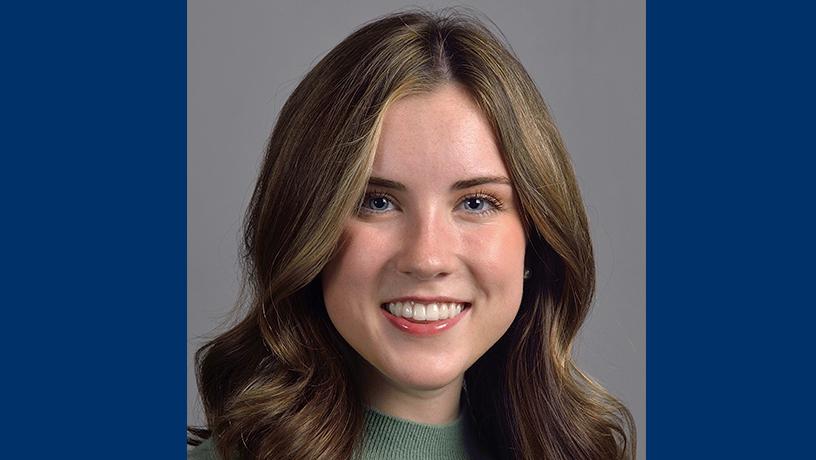
Elizabeth Dentzer
Eryn Dennis | Billinge Group
- Mentor: Professor Simon Billinge, Electrical Engineering
- Home Institution: Brown University
- Hometown: Brooklyn
Using Machine Learning Techniques to Solve Problems in Materials Science & Engineering
As STEM fields become increasingly interdisciplinary, fields that didn’t previously require programming knowledge can now use machine learning to solve problems. Educational examples (edexes) are handson exercises that illustrate the use of machine learning to solve scientific problems. Edexes can be used across several STEM disciplines, however, the focus for the project is undergraduate and master's students studying Materials Science & Engineering (MATSE). Used as ipynbs, edexes serve as a space for students to practice and apply their knowledge of a topic using machine learning and are stored in a database for professors to access at any time. Our project consists of a software infrastructure, which is a setup to make the database and the edexes simple for a professor to use. This infrastructure will allow a professor to use edexes to build a course to their liking. To complete the infrastructure, we created edex course builder (ecb) tools that the professors will be interacting with to create their courses. Some of these tools include a filtering tool, a labeling tool, and a sequencing tool. The eventual goal for this project is for it to expand and become an openly shared community website that professors worldwide can use to select and sequence edexes for their courses and contribute their own edexes
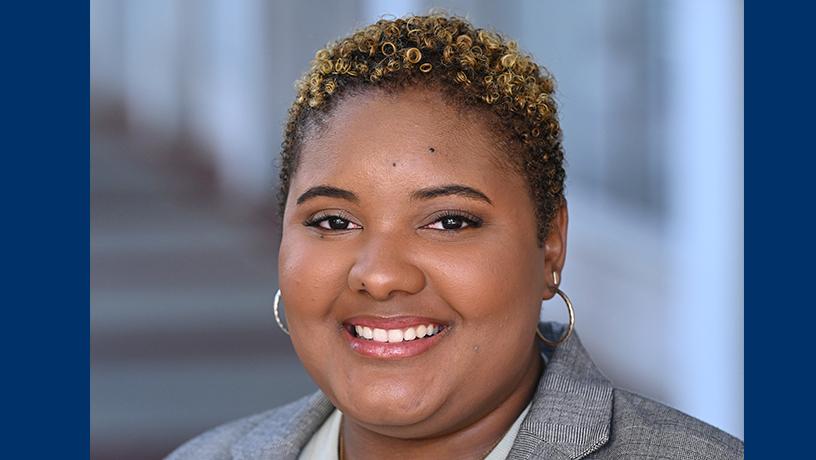
Eryn Dennis
Henry Fuchs | McFaline-Figueroa Lab
- Mentor: Jose L. McFaline-Figueroa and Ross Giglio, Electrical Engineering
- Home Institution: Yeshiva University
- Hometown: Woodmere, NY
Towards the Classification and Characterization of Epidermal Growth Factor Receptor (EGFR) Inhibitors
One of the main contributors to the rapid proliferation of several forms of cancer (including glioblastoma, non-small lung cancer, and liver cancer) is dysregulation of the RTK/ PI3K/MAPK kinase pathway, one example of this is caused by a mutation in EGFR. These findings led to the rapid development of many tyrosine kinase inhibitors and later several generations of EGFR specific inhibitors, many of which have shown promising results in treating these various cancers.
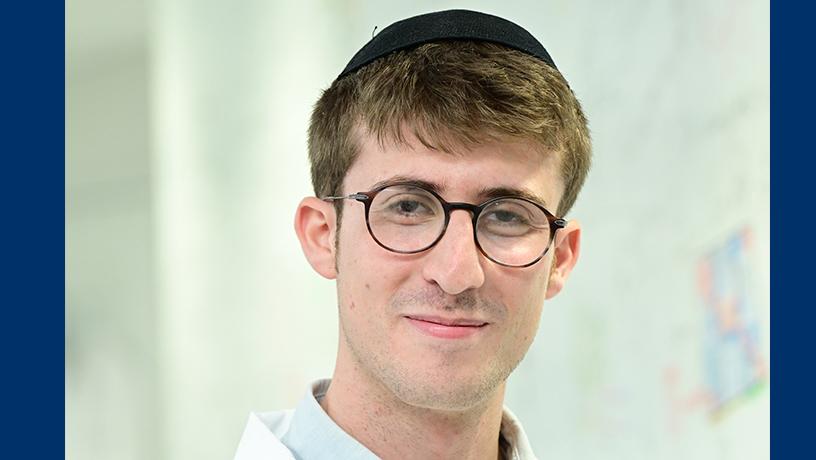
Henry Fuchs
Irsath Azeez | Prof. Itsik Pe'er Lab
- Mentor: Itshack Pe'er and Philippe Chlenski, Computer Science and Systems Biology
- Home Institution: CUNY - Lehman College
- Hometown: New York
Metagenomic Storage and Analysis System Design
The aim of our research is to collect Amplicon Sequence Variant (ASV) which is “used to analyze 16S rRNA gene sequence data”(Schloss, 2021). Once the sequence data and sample metadata are collected, we design a data structure to encapsulate all the data at one place for further analysis. The data is crucial for our research, thus, we have gathered all the ASV sequences data and metadata to store them on a disk using the anndata structure which provides an framework to store all the data in one platform. This anndata is interfaced with Scanpy which are toolkits used to analyze anndata. Scanpy “includes preprocessing, visualization, clustering, trajectory, inference and differential expression testing”(scanpy, 2023). We designed a data structure that contains feature selection, visualization, and mathematical calculations. We were also able to store the data on a disk in a memory efficient way since anndata provides the feature to store the data in categorical method.
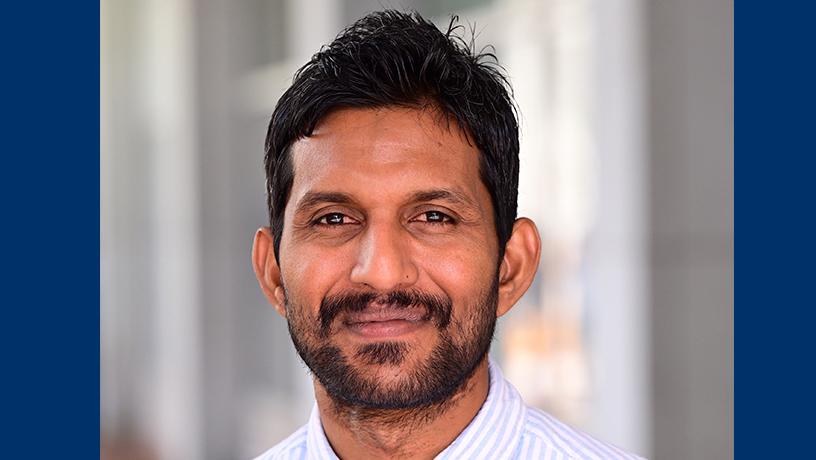
Irsath Azeez
Janissa Abreu | CLUE Lab
- Mentor: Eugene Wu and Yiru Chen, Computer Science
- Home Institution: Lehman College
- Hometown: Bronx
An Execution Engine for Physical Visualization Design
Physical Visualization Design (PVD)[1] is a system that allows a fast design of interfaces such as visualizations and interactions with user-designed choices. PVD is overall demonstrated as an optimizer for automating physical design; given a specification of an interface’s query workload, storage constraints, and latency expectations for interactions. It determines a set of query plans. We primarily focus on the Diffplan specification format and the execution engine to commit the users requests.
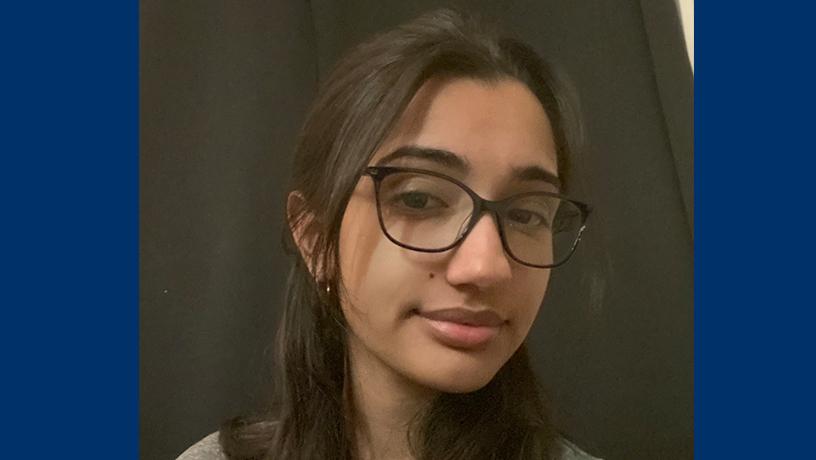
Janissa Abreu
Jonathan Martin | Leong Lab
- Mentor: Kam Leong and Dr. Huiyi Liang, Biomedical Engineering
- Home Institution: The City College of New York
- Hometown: Valley Stream
Yeast Fragment Nanoparticles through Flash Nanocomplexation for Oral Gene Delivery
Nonviral carriers have been on the rise since 2013, answering the limitations of viral vectors by having low immunogenicity and the ability to fabricate and design polymers that can carry multiple plasmid DNA’s. Flash nanocomplexation; using electrical charge differences to instantly break apart and reorganize polymer structures has made it possible to create nanocarriers cheaper. However, oral gene delivery has a difficult challenge of traveling through the acidity if the stomach abd through the mucosal layer if the gastrointestinal (GI) tract. Our research today focusses on using yeast cells to integrate yeast fragments into our nanoparticles using flash nanocomplexation to travel through the microfold cells (M cells) within the intestine that connect to the gut-associated lymphoid tissue [4 reach systemic tissue through the lymphatic/circulatory system
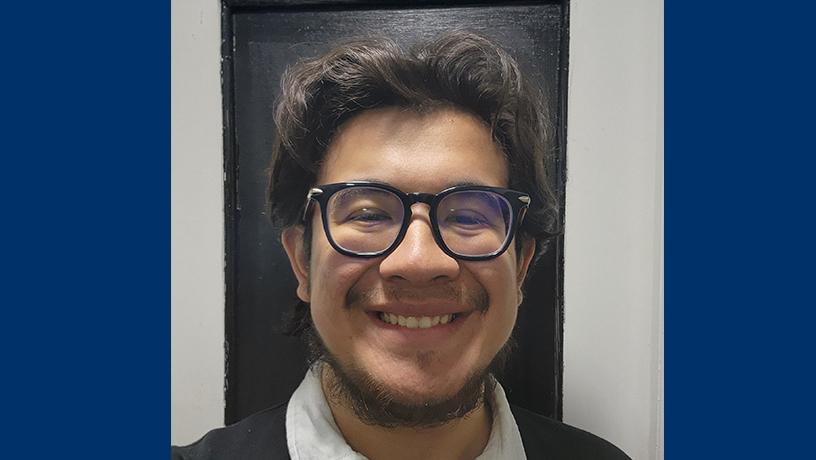
Jonathan Martin
Julian Kim | Intelligent and Connected Systems Lab
- Mentor: Prof Xiaofan (Fred) Jiang, Electrical Engineering
- Home Institution: Penn State University
- Hometown: State College, PA
Modular Drone Platform
Indoor drones provide unparalleled monitoring of buildings and other tight spaces. However, their small size creates a challenge in meeting the wide range of applications due to the limited number of sensors they can carry. Our objective is to create a modular drone platform that facilitates autonomous sensor switching that would allow small indoor drones to execute a variety of tasks.
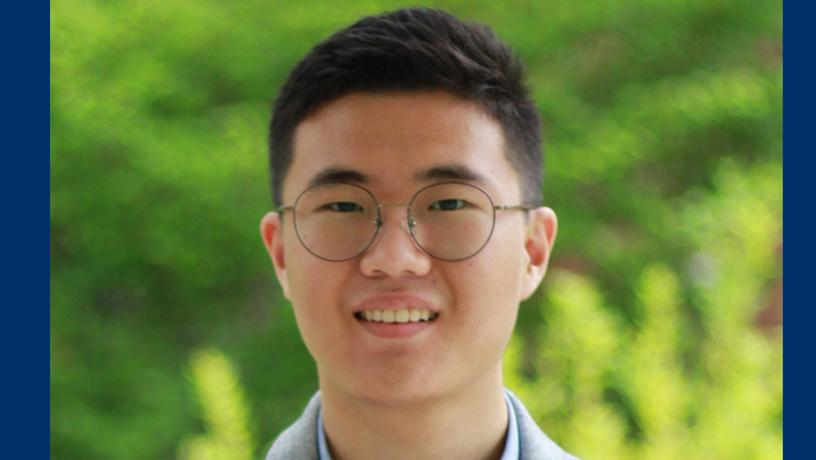
Julian Kim
Katherine Alcazar | Hone Group
- Mentor: Dr. James Hone, Mechanical Engineering
- Home Institution: Arizona State University
- Hometown: Gilbert, Arizona
Polymer-Free Anodic Oxidation Nanolithography of Monolayer Transition Metal Dichalcogenides
Two-dimensional Transition Metal Dichalcogenides (TMDs) have high mechanical flexibility with desirable electrical and optical properties, which have shown great potential for application in electronics and optoelectronics. However, the precision and accuracy in shaping monolayer TMDs remains a challenge. Although ebeam lithography provides a commendable accuracy in etching TMDs, its reliance on polymers introduces unwarranted contamination. Scanning probe lithography combined with local anodic oxidation, known for its exceptional etching quality on graphene leaving no oxide residues, has shown great promise. The objective of this research is to realize the highquality etching on monolayer TMDs by using the polymer-free anodic oxidation nanolithography method. The atomic force microscope is controlled to include varying conditions to optimize precision and quality. The successful optimization of parameters including voltage frequency, and tip velocity allowed us to demonstrate a polymer-free, electrode-free flexible nanolithography on monolayer TMDs, thereby bolstering the fabrication of nanoscale devices and heterostructures.

Katherine Alcazar
Keicha' Barnes | Structure Function Lab
- Mentor: Prof Christine Hendon, Electrical Engineering
- Home Institution: University of the District of Columbia
- Hometown: Washington, D.C
Analyzing human ventricles using optical coherence tomography
Ventricular Arrhythmias can be very deadly if left untreated. For the past ten weeks, we have utilized an imaging system known as Optical Coherence Tomography to process images of human cardiac tissues to understand this disease better. The OCT system is used to image and identify trabeculations within the cardiac tissue.
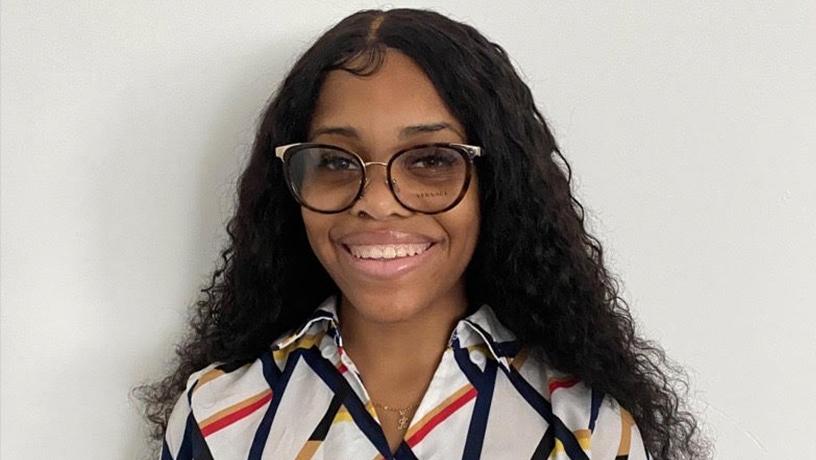
Keicha' Barnes
Kelly Yen | Mobile X Lab
- Mentor: Professor Xia Zhou, Computer Science
- Home Institution: Franklin W. Olin College of Engineering
- Hometown: Redmond, WA
Developing a Facial Landmark Analysis Pipeline for Real Time Scene Authentication to Protect Against Deepfake Attacks
“Deepfake” content refers to visual and auditory media that has been generated by an artificial intelligence (AI). The most recent deepfake technology is capable of generating content that’s indistinguishable from real media, introducing a new class of security threats. Efforts to distinguish deepfake videos from real videos typically involve training a secondary AI algorithm to recognize specific artifacts or physiological cues. However, these countermeasures assume that deepfake generating algorithms won’t continue to evolve and improve. To circumvent a deepfake generation vs detection arms race, we propose a real time scene authentication tool that authenticates an entire scene happening in the real world. This Summer’s project focused on developing a facial landmark analysis pipeline to be used in both the scene and video authentication components of this project.
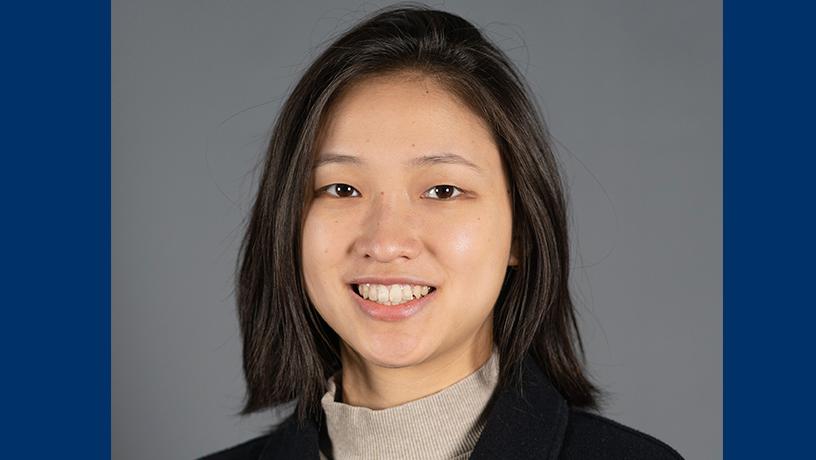
Kelly Yen
Keylin Boyd | Structure Function Lab
- Mentor: Dr. Christine P. Hendon
- Home Institution: Texas Christian University
- Hometown: Dallas, Texas
Fiber Orientation Mapping with OCT Imaging
Current optical tissue imaging techniques used in biomedical and medicinal applications include ultrasound imaging, microscopy, and optical coherence tomography (OCT). OCT provides three-dimensional imaging with approximately 10-micron resolution. The primary objective of this research was to explore the viability of utilizing white light camera imaging techniques to measure collagen fiber organization. Collagen is a protein in the body that contributes to the growth of fibroids. Fibroids are benign tumors of the uterus that cause pain and increased bleeding and can impact fertility. Uterine fibroids are very common, however many are diagnosed or treated after years of experiencing symptoms. There are additional challenges when determining whether this abnormality is cancerous or a benign fibroid due to the imaging limitations of the current use of white light endoscopic cameras.
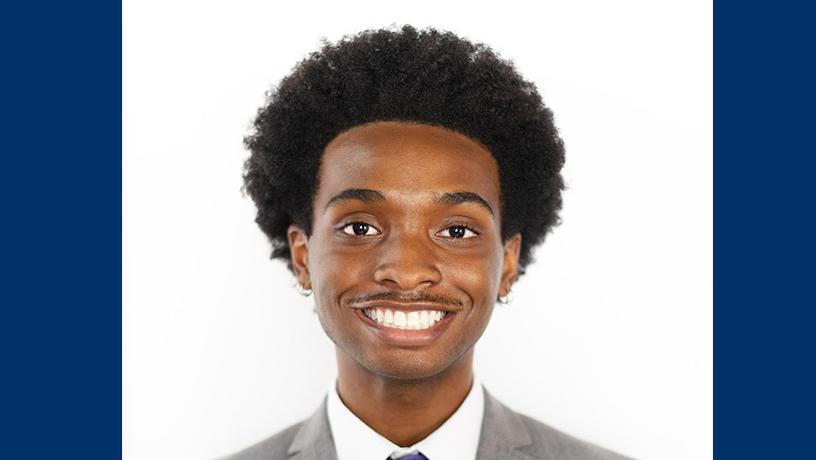
Keylin Boyd
Krithika Subramanian | Mobile X Lab
- Mentor: Prof Xia Zhou, Computer Science
- Home Institution: The Pennsylvania State University
- Hometown: Oviedo, Florida
Driver State Monitoring with Computational Fabrics for Safer Driving
In recent years, cars have become increasingly intelligent. However, drivers remain as the main risk factor for road accidents. By monitoring the physiological state of a driver, our system aims to detect driver drowsiness which can provide an additional layer of safety. Previous methods to track a driver’s physiological states include computer vision, driver sonar, and rigid wearable sensors. Our proposed method uses conductive fabrics as sensing electrodes embedded into the steering wheel for physiological sensing. Unlike the previous methods, fabric-based sensing is a form of unobtrusive monitoring, which allows for long-term monitoring without discomfort or distraction. Additionally, they’re easily scalable and customizable to different vehicle types and driver preferences. Over the course of the summer, we focused on creating a steering wheel prototype to test the viability of electrocardiogram (ECG) signals in different driving environments
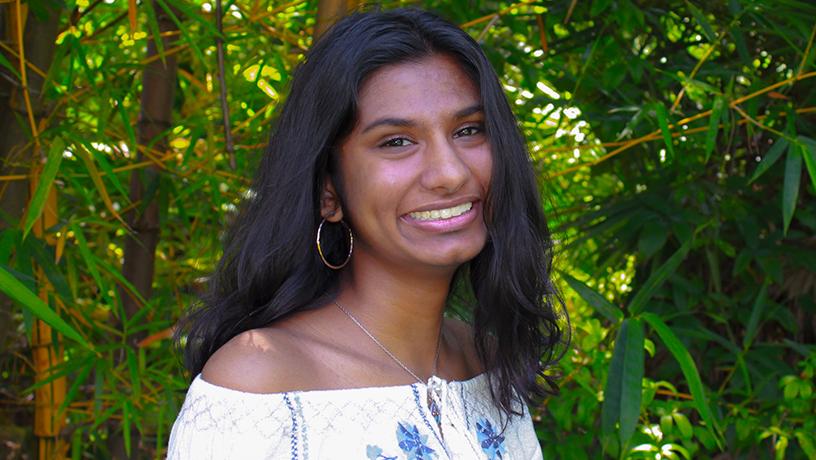
Krithika Subramanian
Lana Lukacevic | Data Science Institute
- Mentor: Professor Computer Science
- Home Institution: William E. Macaulay Honors College
- Hometown: Astoria, NY
Magic Framework: Stateful Dashboards to Record Relationships Between User Choices
Meaningful state means that a user should be able to modify some visual component, and that visual component should correspond to a persistent object. Such objects can be passed between visual components or back to a backend for processing. Meaningful state matters because it allows users to to study how changing various parameters shown as visual components impact one another and data models. Prior frameworks for creating dashboards allow the passing of state to backends, but they do not meet the requirements for enabling meaningful state in its entirety without ad-hoc solutions. In short, they do not consider meaningful state tracking as part of the framework itself
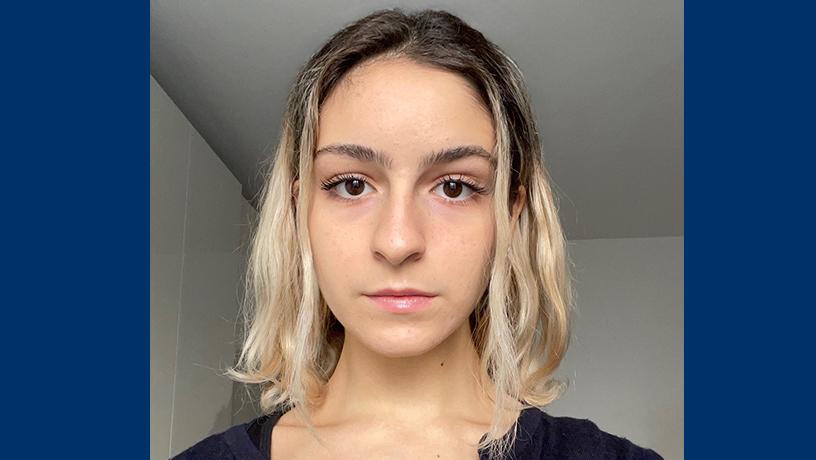
Lana Lukacevic
Makayla Mitchell | Tissue Engineering and Active Biomaterials (TEAM) Lab
- Mentor: Dr. Treena Livingston Arinzeh, Biomedical Engineering
- Home Institution: Johns Hopkins University
- Hometown: Austin, Texas
Investigating Sequestration of TGF-β3 on GAG Mimetic-Containing Scaffolds for Cartilage Repair
Osteoarthritis (OA) affects approximately 7% of the global population (528 million people). It results in the damage and breakdown of hyaline cartilage between joints. Articular cartilage has limited ability to self-repair and irreversible damage leads to OA. Current treatments for OA result in poor integration with the surrounding tissue and formation of fibrocartilage instead of hyaline cartilage, indicating an insufficient amount of bioactivity to promote chondrogenesis. Transforming growth factor-beta (TGF-β) is necessary for chondrogenesis of mesenchymal stem cells (MSCs), with TGF-β3 inducing a higher chondrogenic potential than other growth factors. Sulfated glycosaminoglycans (GAGs) are polysaccharide components of the cartilage extracellular matrix (ECM) that can sequester such growth factors to aid in inducing cellular differentiation towards chondrogenesis. Electrospun gelatin scaffolds are fibrous mats that mimic the structure of the cartilage ECM [3]. This study aims to compare GAGs and GAG mimetic-containing gelatin scaffolds as a strategy for cartilage tissue repair. Specifically, these studies fabricated native GAG and GAG mimetic-containing gelatin scaffolds and characterized the TGF-β3 sequestration.
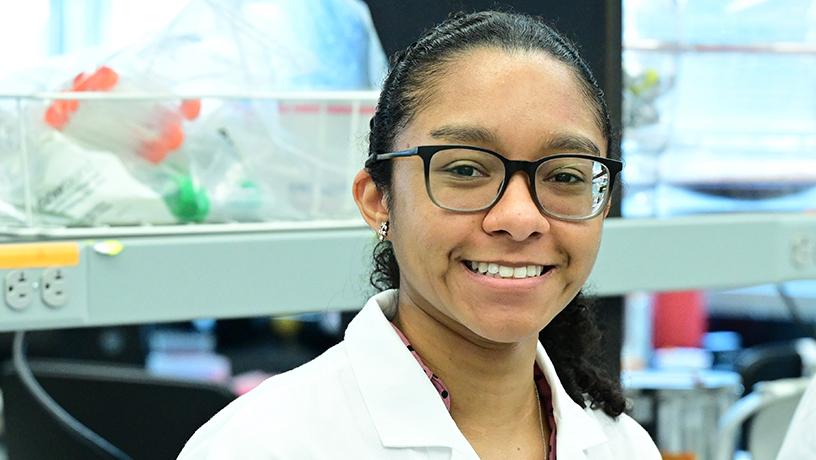
Makayla Mitchell
Marylyn Carrillo | Smart Cities Lab
- Mentor: Andrew Smyth, Professor of Civil Engineering and Engineering Mechanics
- Home Institution: University of California, Los Angeles
- Hometown: Perris, CA
Manhattan in Motion: Visualizing Delivery Vehicle Crash Density for Safer Urban Mobility
Manhattan, New York, is a bustling epicenter of commerce characterized by high delivery truck activity, posing significant challenges concerning traffic safety and congestion. To address these concerns, this study aims to shed light on traffic volume and delivery truck crash density in Manhattan using advanced mapping techniques. By exploring the correlation between traffic volume and crash densities and loading zones, this study seeks to identify critical areas prone to accidents, thus laying the groundwork for implementing effective safety measures and traffic management strategies.
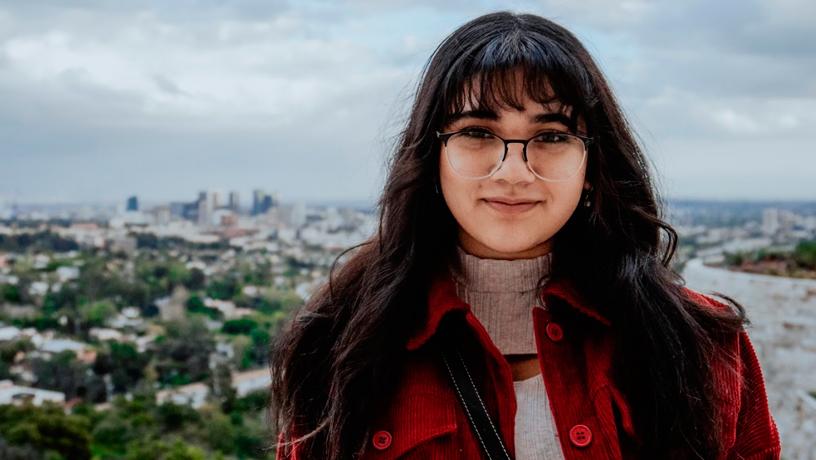
Marylyn Carrillo
Megan Trapanese | Kelly Lab (PoreStore Lab)
- Mentor: Dr. Shaina Kelly, Earth and Environmental Engineering
- Home Institution: Macaulay Honors College at The College of Staten Island
- Hometown: Staten Island
Modeling Rock Cores Using MRST
The study of CO2 sequestration and storage in rocks has significant applications in the fight against climate change. The goal of the present study was to create a visual model of core-scale rocks, which reside as an intermediate stage between pore and reservoir scale. The model was created and then modified to contain properties of specific rocks. It was also used to simulate certain experiments that are conducted in the lab, such as twophase flow, so that a deeper understanding of the physical experiment can be achieved in observing the model.
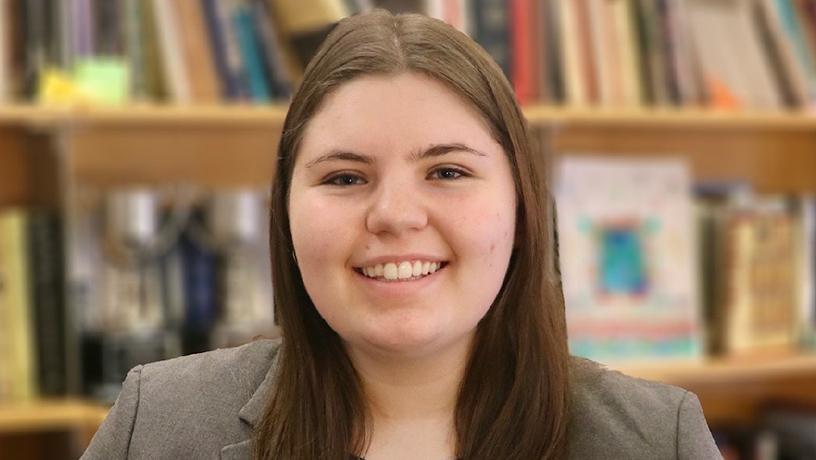
Megan Trapanese
Mia Minaya | Distributed Network Analysis Lab
- Mentor: Prof Dan Rubenstein, Professor of Computer Science
- Home Institution: Lehman College
- Hometown: Bronx, NY
Exploring Quantum Computing for Solving the Traveling Salesman Problem
The Travelling Salesman Problem, a classic combinatorial optimization problem, seeks the Hamiltonian cycle that visits each city once and returns to the starting point. Traditional TSP algorithms fail because the number of cities exponentially increases the number of solutions. Quantum computing can now solve NP-hard problems. This study solves the TSP using QPE and IQFT. Our analysis replicates the 2018 study by Karthik Srinivasan, Saipriya Satyajit, Bikash K. Behera, and Prasanta K. Panigrahi on "Efficient quantum algorithm for solving traveling salesman problem: An IBM quantum experience."
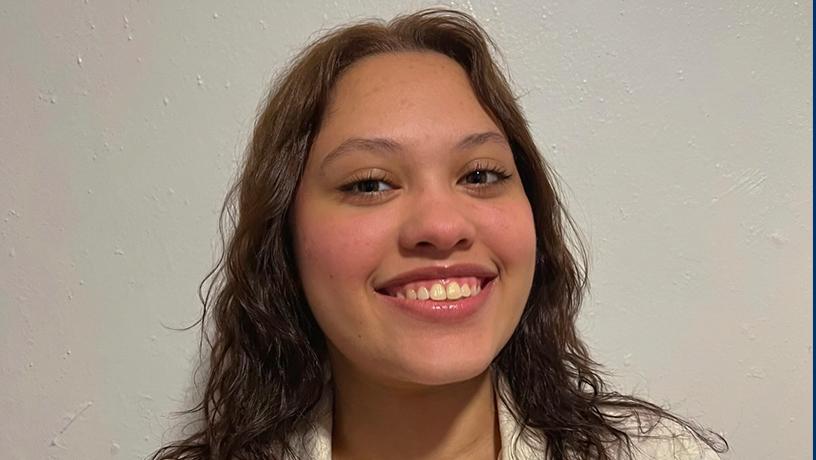
Mia Minaya
Michelle Wyss | Daniella Fodera & Erin Louwagie, Myers Soft Tissue Lab
- Mentor: Kristen Myers, Mechanical Engineering
- Home Institution: Virgina Tech
- Hometown: Lorton, VA
Structural and Compositional Properties of Non-human Primate Uterus and Cervix Throughout Gestation
In 2021, 3,664,292 women in the US gave birth, however, 10.49% of these births were pre-term. Pregnancy is a protected environment and changes in maternal anatomy at mid-gestational timepoints are poorly understood. To overcome this knowledge gap, a nonhuman primate (NHP) model was used to assess the shape and structure of the uterus and cervix through gestation.

Michelle Wyss
Mohamed Albasuony | Roar Lab
- Mentor: Prof Sunil Agrawal, Professor of Mechanical Engineering and of Rehabilitation and Regenerative Medicine
- Home Institution: CUNY-Lehman College
- Hometown: New York, New York
Virtual Reality Maze Navigation as a Cognitive Training Tool for Gait and Balance Rehabilitation
Emerging research suggests that virtual reality (VR) maze navigation holds the potential for enhancing navigation patterns and balance. However, a comprehensive understanding of its impact requires further investigations. This study delved into the effects of VR navigation on the gait and balance of healthy adults under two distinct conditions: with and without cognitive demands during navigation in the maze. Participants were randomly assigned to different groups, utilizing the HTC VIVE Eye Pro VR headset, foot trackers, and pelvis tracker ( VIVE HTC PRO, Valve Corporation, Bellevue, WA, USA) to navigate a digital maze developed in Unity 3D environment. Stride length, stride width, movement positions, foot placements, and turning points were among the parameters measured during the navigation process. The experiment findings are still in process of analyzing and classifying which important factors to consider when redoing the experiment again to be able to obtain more valuable results from our target group of subjects. The goal is to improve it so we can actually get meaningful results that really matter. The maze design, characterized by an increased number of decision points and larger maze size compared to previous studies, suggests that design elements can influence VR’s impact on gait and balance. The study findings imply that VR mazes may enhance adults’ walking patterns and symmetry. However, more research is necessary, particularly in developing mazes customized to individuals' balance abilities, especially for those facing challenges. The proper tailoring of mazes and tasks could maximize the benefits, with navigation requiring footing maintenance within a VR environment, thereby replicating real-world balance demands. VR navigation technology shows potential for addressing balance-related problems. Further research focusing on balance-impaired individuals could provide valuable insights for the development of successful VR-based balance therapies and practical applications, such as designing homes, athletes, and possibly fully immersive gaming.
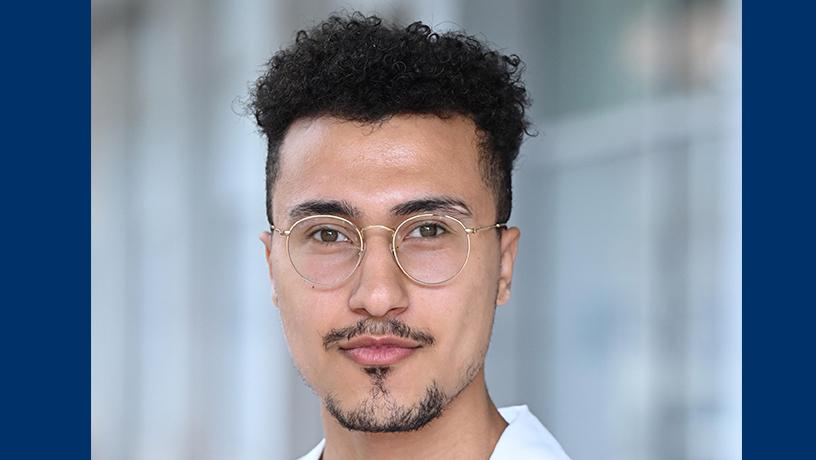
Mohamed Albasuony
Natalie S. Peralta | BITEL Lab
- Mentor: Professor Helen H. Lu,
- Home Institution: The City College of New York
- Hometown: Brooklyn, NY
Immunomodulator control of Myofibroblast Plasticity & Nuclei Morphology
Scarring is associated with extra-cellular matrix (ECM) dysregulation1 and myofibroblast activation and persistence. Myofibroblasts are a contractile pro-fibrotic cell type critical for early remodeling and deposition of predominantly type I collagen after injury in adult healing soft tissues.1,2,3 The small molecule IKK inhibitor, 2-Amino-6-[2-(cyclopropylmethoxy)- 6-hydroxyphenyl]-4-(4-piperidinyl)-3 Conclusions: We demonstrated that the pyridinecarbonitrile (ACHP) blocks immunomodulator ACHP successfully targets IKK, which shuts down the the NF-B inflammatory pathway and that 10 inflammatory arm of the NF-B M is the maximum tolerated dose that signaling pathway.
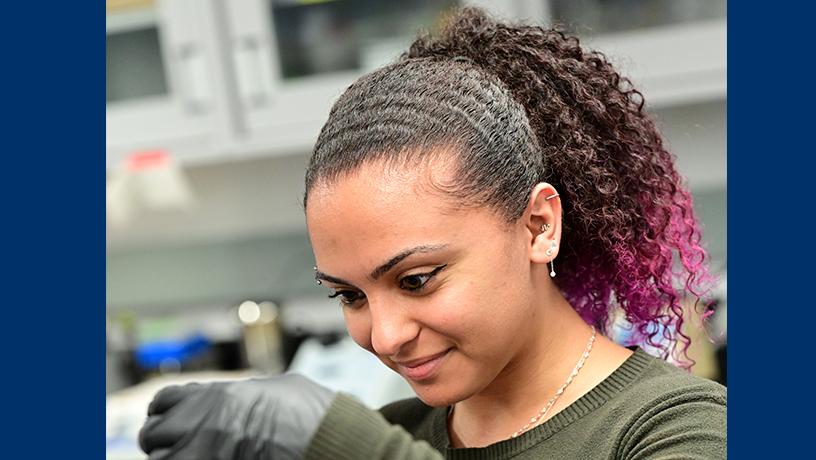
Natalie S. Peralta
Pierce Rubenstein | Environmental Flow Physics Lab (EFPL)
- Mentor: Marco G. Giometto, Assistant Professor of Civil Engineering and Engineering Mechanics
- Home Institution: The College of New Jersey (TCNJ)
- Hometown: Livingston, NJ
2D to 3D Wind Speed Data Reconstruction for Development of Low-Cost Monitoring Systems
: To generate reliable simulations of boundary layer flows on the regional scale, largescale monitoring systems collecting spatiotemporal in-situ measurements are essential. Using 2D anemometers instead of 3D sensors significantly reduces costs and allows a denser monitoring network with additional stations. To make this substitution possible, it is necessary to reconstruct the vertical component of the wind velocity, w, from the measured horizontal velocity vector (u, v). The present study aimed to develop a machine-learningbased reconstruction of vertical wind velocity w to facilitate the reliability of 2D anemometers in the field.
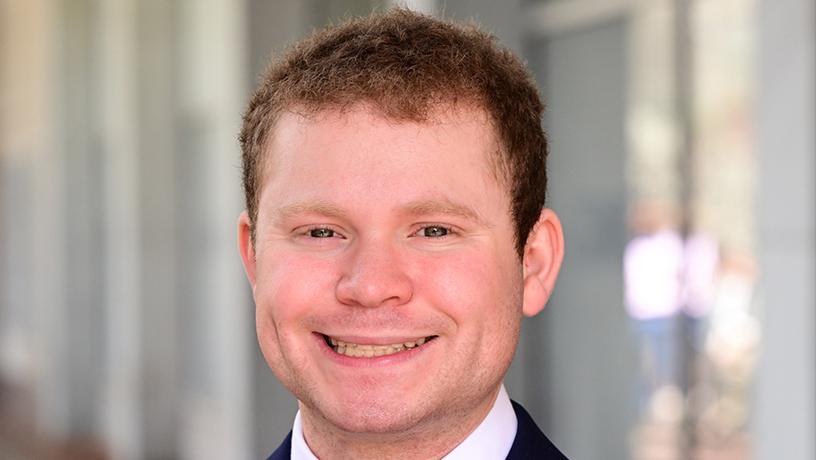
Pierce Rubenstein
Sean Wu | Billinge Group
- Mentor: Prof Simon Billinge, Professor of Materials Science and Applied Physics and Applied Mathematics
- Home Institution: Pepperdine University
- Hometown: Chino Hills
Interatomic Distance List Database and Deep Learning for Ab Initio Structure Solution From PDF Data
Crystallography and X-ray diffraction are powerful tools for understanding the atomic composition and structure of materials. Information extracted from these techniques is crucial for material scientists as it can assist in the development of improved drugs and even more efficient battery designs. Crystallography involves two fundamental problems: the forward and inverse problems. The forward problem is relatively straightforward, as scientists can diffract X-ray beams off the material to obtain a scattering pattern, which provides interatomic information. However, the inverse problem, especially in complex nano-materials, is more challenging, and advanced methods are required to determine the 3D electron density map from one-dimensional diffraction data. The pair distribution function (PDF) is employed for this purpose, representing a weighted histogram of interatomic distances. Computing the distance lists of atoms involves a double sum, resulting in a nested for loop with O(n2) time complexity. This computational burden can significantly prolong data analysis for high r(Å) values. To address this issue, we propose a solution that involves pre-computing a distance list database. By doing so, we can calculate the pair distribution function in linear or even constant time, enabling the analysis of more complex problems. In this study, we developed a Python framework that not only builds but also maintains a distance list database. The database contains 785 experimental. CIF files and an extensive .json dataset, including metadata such as space group and unit cell information. We believe this resource will be valuable for computational material scientists, especially in the context of machine learning, where they can directly solve the inverse problem or other correlation problems from distance lists. While the database is not yet fully published, the groundwork and database maintainer code have been established during the summer to facilitate future research and applications in crystallography
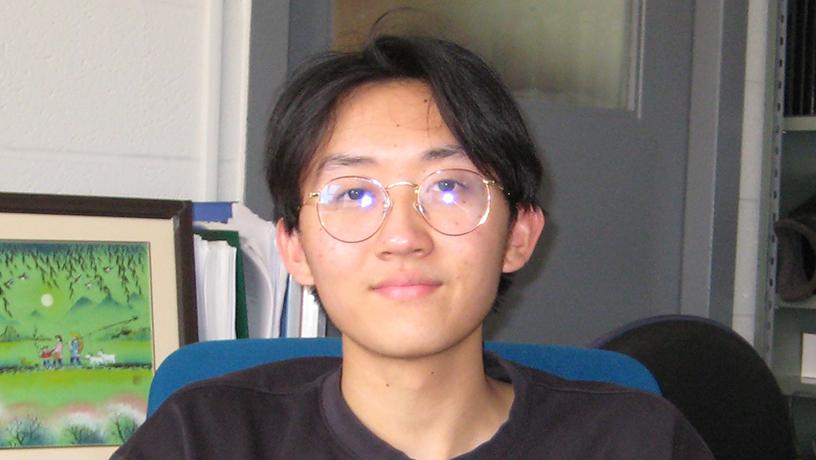
Sean Wu
Shivi Jindal | Wright Lab
- Mentor: Prof John Wright, Associate Professor of Electrical Engineering
- Home Institution: Carnegie Mellon University
- Hometown: Edison, NJ
Identifying Limitations of Vision Transformers in Structured Image Recognition
Vision Transformers (ViTs) have emerged as a breakthrough architecture in the field of computer vision, altering image classification tasks by surpassing the performance of Convolutional Neural Networks (CNNs) on very large datasets. Unlike CNNs, which rely on convolutional layers, ViTs employ self-attention mechanisms to process images as sequences of patches, allowing the model to capture interdependence among patches and images. Despite their accomplishments in image classification tasks, the ViTs that underlie popular image generation models such as Stable Diffusion face challenges in spatial recognition and generating structured images. This issue manifests itself in distorted representations of structure–hands with too many fingers and checkerboards with irregular square patterns. As a result, we ask: Which classes of structured image recognition tasks are particularly challenging for Vision Transformers, and how can we determine this? What factors contribute to their failures on these tasks?
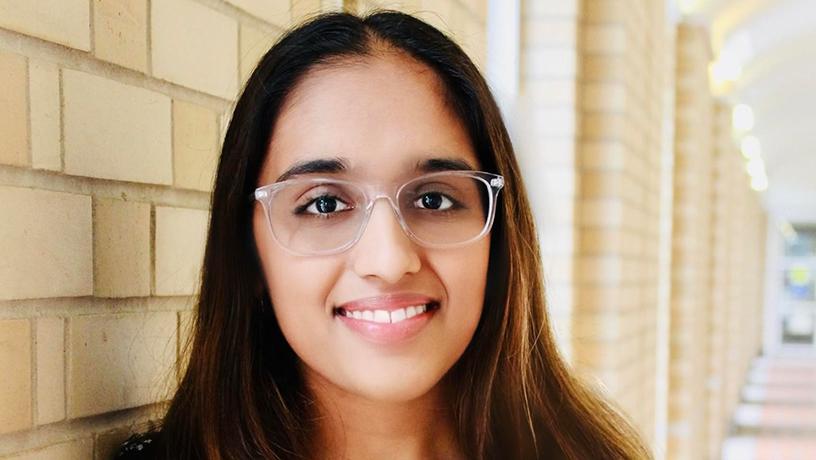
Shivi Jindal
Sofia Cruz | Hone Lab
- Mentor: Dr. James C. Hone, Professor of Mechanical Engineering; Chair, Department of Mechanical Engineering
- Home Institution: University of Colorado Boulder
- Hometown: Freehold, New Jersey
Edge Contacts to Atomically-Thin Superconductors
A qubit’s unconventional quantum properties make them distinct from classical bits and enable them to possess exponentially greater computing power than a classical computer. The prospect of scaling quantum computers to contain a large number of qubits on a single processor chip is limited, with a single qubit typically occupying > 1 mm 2 area. We study a class of materials known as van der Waals (vdW) layered materials which show promise to host next-generation qubits with both long-coherence-time data storage and small areas for better scalability. Over the course of the summer, we explored different methods for isolating and making edge contact to single atomic layers of the vdW superconductor molybdenum telluride (MoTe2), encapsulated by the vdW insulator hexagonal boron nitride (hBN), which will serve as a platform for next-generation quantum devices.
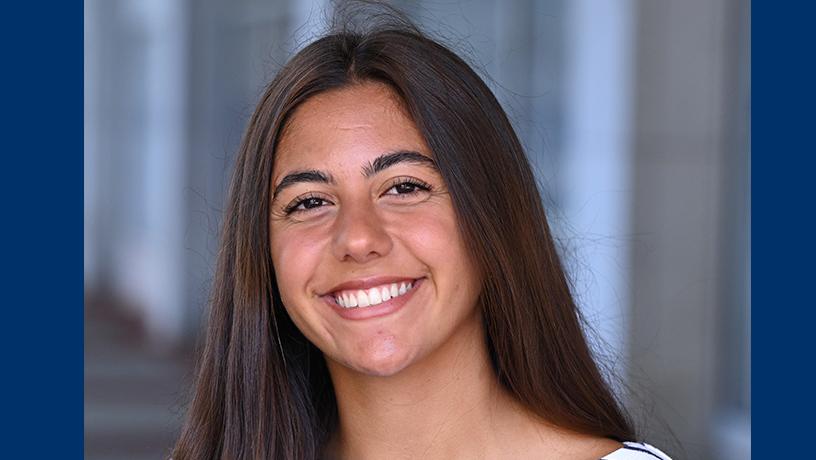
Sofia Cruz
Steven Robles Blasini | Cellular Engineering Laboratory
- Mentor: Prof Clark Hung, Professor of Biomedical Engineering and Orthopedic Sciences(in Orthopedic Surgery)
- Home Institution: University of Florida
- Hometown: San Juan, PR
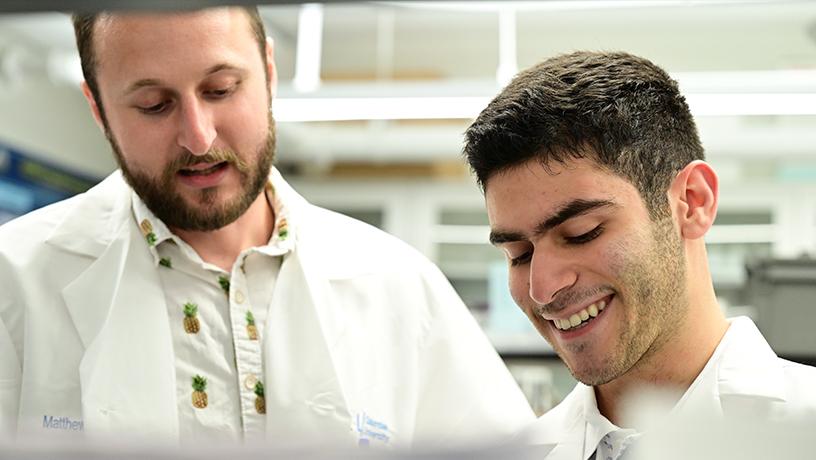
Steven Robles Blasini
Tara H Kimiavi | Roar Lab
- Mentor: Prof Sunil Agrawal, Professor of Mechanical Engineering and of Rehabilitation and Regenerative Medicine
- Home Institution: Georgia Institute of Technology
- Hometown: Washington, D.C
Muscle Synergy Analysis of tSCS-Assisted Balance Training with a Robotic STAND Trainer
Muscle synergy analysis is often used as an outcome measurement for task performance1 to investigate how the central nervous system coordinates movement in healthy individuals and in subjects with neuromuscular impairments2. Transcutaneous spinal cord stimulation (tSCS) is a validated rehabilitation technique used to facilitate greater locomotor function in post-spinal cord injury (SCI) patients 3-4. When combined with functional training tasks, tSCS has also been shown to facilitate greater balance control in patients with SCI4. combination of tSCS and functional balance training with the robotic STAND trainer5 may facilitate balance restoration and the formation of more complex muscle synergies for patients with spinal cord injury. The objective of this project is to facilitate balance restoration in patients with severe spinal cord injury using the STAND trainer and transcutaneous spinal cord stimulation while developing an advanced electromyographic filtering and muscle synergy analysis toolbox in MATLAB for experimental use.
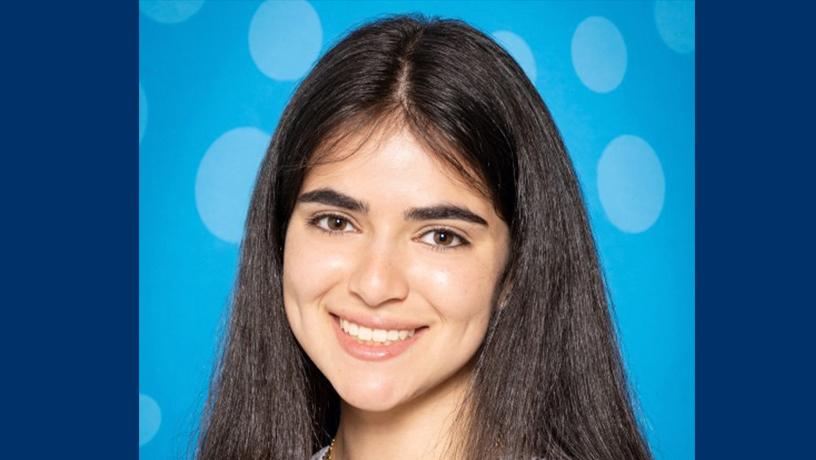
Tara H Kimiavi
Weiyi Zhang | Sia Lab
- Mentor: Prof Samuel Sia, Sia Lab
- Home Institution: University of Connecticut
- Hometown: Waterbury
Silver nanowire thin-film heaters in bioplastic microfluidic devices for molecular diagnostics
Microfluidics is an emerging technology for expanding access to molecular diagnostics, such as polymerase chain reaction (PCR) and loop-mediated isothermal amplification (LAMP), in point-of-care and low-resource settings. However, these microfluidic nucleic acid detection assays still rely on heating and extensive amplification steps predominantly requiring bulky, expensive laboratory equipment, thus limiting their application. This work seeks to develop a low-cost, minimal-equipment heating method by utilizing silver nanowires (AgNWs) as integrated heaters on microfluidic devices for nucleic acid amplification diagnostic assays.
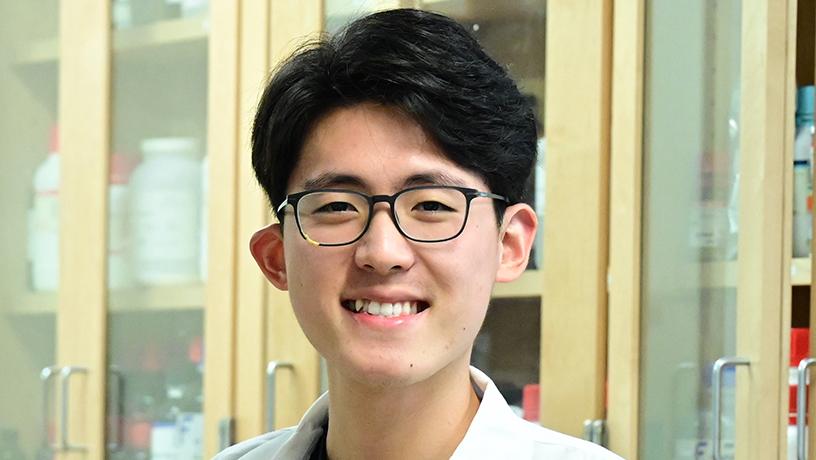
Weiyi Zhang
Xin Yi Therese Xu | CEAL Lab
- Mentor: Prof Brian Smith, Assistant Professor of Computer Science
- Home Institution: Pomona College
- Hometown: Miami, FL
Leveraging Street Cameras to Support Outdoor Navigation for Blind Pedestrians
Outdoor navigation in unfamiliar environments is challenging for blind and low-vision (BLV) people. GPS-based assistive technologies, such as BlindSquare and Microsoft Soundscape, are commonly used; however, such systems fail to assist with other aspects of outdoor navigation that require real-time and precise knowledge of the user. Thus, we are exploring the use of street cameras to leverage support for outdoor navigation for blind low vision pedestrians. We hope to address the common challenges faced by developing a street camera-based navigation system using computer vision that provides real-time auditory feedback.

Xin Yi Therese Xu
Yuliana Garcia | Water Lab
- Mentor: Dr. Upmanu Lall, Professor of Earth and Environmental Engineering and of Civil Engineering and Engineering Mechanics
- Home Institution: University of Michigan - Ann Arbor
- Hometown: Arlington, Texas
Sustainable Synergy in GSL: Exploring a Dual Approach to Reduce Evaporation & Generate Solar Power
The Great Salt Lake in Utah—characterized by its reliance on evaporation as the sole outflow—faces a significant challenge due to declining water levels; hence, there is a need to consider the potential of floating solar panels as a solution to mitigate evaporation. Given that surface area has been shrinking rapidly over last decade with new record low in 2022 at 4,189.6 ft. (NASA, 2022) it is essential to address the important ecological, health and economic implications of the GSL, as it is a crucial indicator of regional climate.
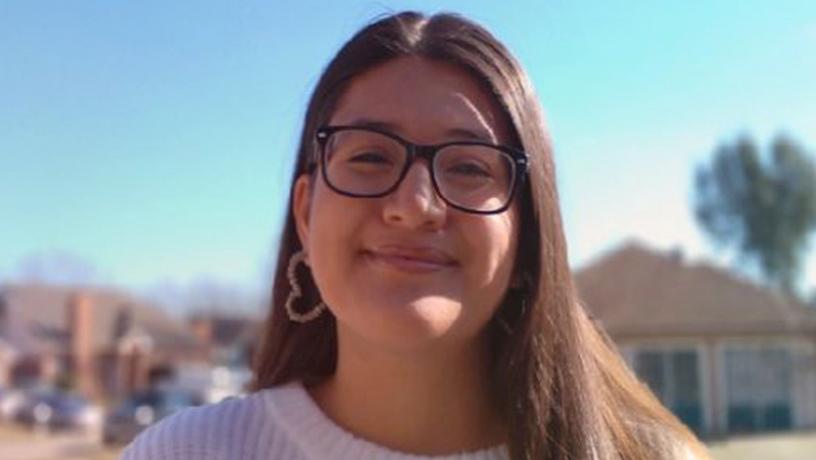
Yuliana Garcia
Zahidul Zahin | Venkataraman Group
- Mentor: Latha Venkataraman, Lawrence Gussman Professor of Applied Physics and Professor of Chemistry
- Home Institution: CUNY Lehman College
- Hometown: Bronx, New York
Conductance of 4,4′-Bipyridine Single-Molecule Junctions with Silver Electrodes
Metal-molecule surfaces in single-molecule junctions effectively influence conductance, the most fundamental transport property. Gold (Au) is the most commonly used electrode material due to its chemical inertness. However, other metals, like silver (Ag), are seldom used tdue to their instability and tendency to oxidize. In this study, we employ a modified Scanning Tunneling Microscope-based Break Junction (STM-BJ) setup inside a glove box to measure the conductance of 4,4'-Bipyridine (BP) single-molecule junctions with silver and gold electrodes in an inert N2 atmosphere.
